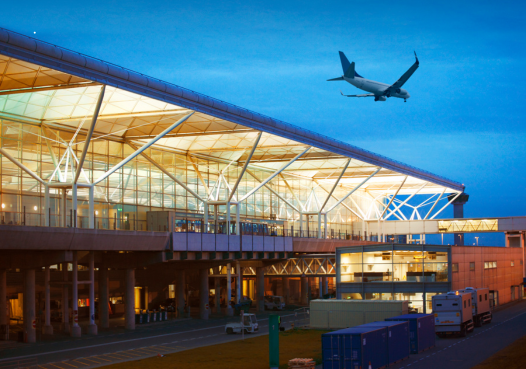EU State aid Guidelines must be extended to safeguard vital regional air connectivity and facilitate decarbonisation

ACI EUROPE calls on the European Commission to extend the EU State aid Guidelines to regional airports, so that they can continue contributing to the connectivity, competitiveness and cohesion of Europe’s regions but also decarbonise and facilitate the deployment of zero-emission aircraft.
Brussels, 8 October 2024: Responding to the recent initial public consultation on the review of the 2014 EU Aviation State Aid Guidelines1, ACI EUROPE today urged the European Commission to ensure that smaller regional airports would still be able to receive operating aid in the future and to better align the Guidelines with the aviation sector’s decarbonisation imperative.
These key asks are backed by a newly released comprehensive study into the profitability of Europe’s regional airports conducted by Oxera2.
Financial viability and connectivity – intertwined challenges
Due to the high fixed infrastructure costs and lack of economies of scale — in short, the fact that operating an airport has a high base cost regardless of passenger numbers — regional airports often face the challenge of financial viability. In recognition of this, the Aviation State aid Guidelines have allowed those airports with less than 3 million passengers per annum to receive State aid aimed at covering their operating costs deficit (operating aid). This was done in recognition of the crucial role these airports play for the connectivity of their communities and the economic development of the EU.
However, the Guidelines also put an end date to such operating aid: initially by 2024, later prolonged to 2027. These deadlines were set based on the assumption that over time, all airports with more than 200,000 passengers per annum would be able to cover their operating cost and become profitable by raising their user charges, attracting new traffic, and achieving more cost efficiencies.
Yet, the Oxera study reveals that this has not been the case — and that this is unlikely to change in the foreseeable future for airports with less than 1 million passengers per annum. This means the review of the Aviation State Aid Guidelines must ensure operating aid to these airports will be extended beyond 2027.
Nicole Robins, partner at Oxera, said: “Our extensive research about the financial viability of small airports shows that those airports with fewer than 500,000 passengers per year are expected to remain consistently unprofitable, while those between 500,000 and 1 million passengers per year are unlikely to become consistently and significantly profitable before the end of the transitional period. While many factors matter for airports' profitability, passenger volumes matter, and not all airports are growing to achieve the economies of scale needed to break‑even. The implications are that the Commission’s Aviation State Aid Guidelines should continue to allow EU States to provide operating aid for these airports.”
Olivier Jankovec, ACI EUROPE Director General added: “The Oxera study reveals how the Covid-19 pandemic, the energy crisis, and major structural changes in the aviation market — both on the demand and supply sides — have combined to further challenge the economics of smaller regional airports. This, in turn, affects the connectivity they provide for their communities. Crucially, the study also highlights the impending impact of climate policies, particularly the EU Fit for 55 package. It is clear that these policies will increase costs and reduce traffic, especially for smaller airports — making the idea of such airports breaking even a pipe dream. The disruptive and structural nature of these factors must be recognised by the Aviation State Aid Guidelines — along with the fact that supporting the financial viability of our smaller regional airports is a prerequisite to maintain vital air connectivity for their communities.”
State aid, but make it green
ACI EUROPE also recommended that the Aviation Guidelines should include a section specifically dedicated to aid for environmental protection, to cover the necessary investments linked to decarbonisation of airports, regardless of their size. The recently released Draghi report supports the necessity to finance decarbonisation solutions, placing the cost of decarbonisation at €61 billion a year for aviation. Given the scale of investment needed, there is an unquestionable need to grant state aid to airports, in order to enable them to adapt to EU standards in relation to the objectives of the Green Deal.
Jankovec added: “Airports have embraced decarbonisation at scale and the pace of their climate action is only accelerating, as exemplified by the results of the Airport Carbon Accreditation programme. Today, fifteen airports in Europe have reached net zero for emissions under their control (Level 5) and fifty more have aligned their carbon reduction trajectories with the objectives of the European Green Deal. But more will be needed to achieve full-sector decarbonisation of all airports in Europe. Especially as these airports are increasingly looking at securing availability of Sustainable Aviation Fuels and green energy, as well as facilitating the deployment of zero-emission aircraft. State aid has an important role to play in advancing aviation’s transformation into the green transport mode of choice. And the Commission has a once-in-a-lifetime opportunity with the current revision to provide the necessary legal tools to make it a reality.”
_____________________
2 Oxera Report – Economic analysis of the profitability of regional airports – September 2024

